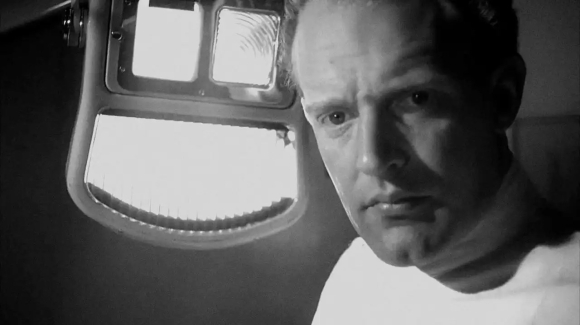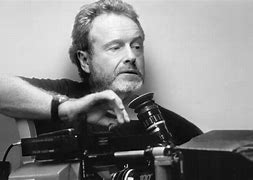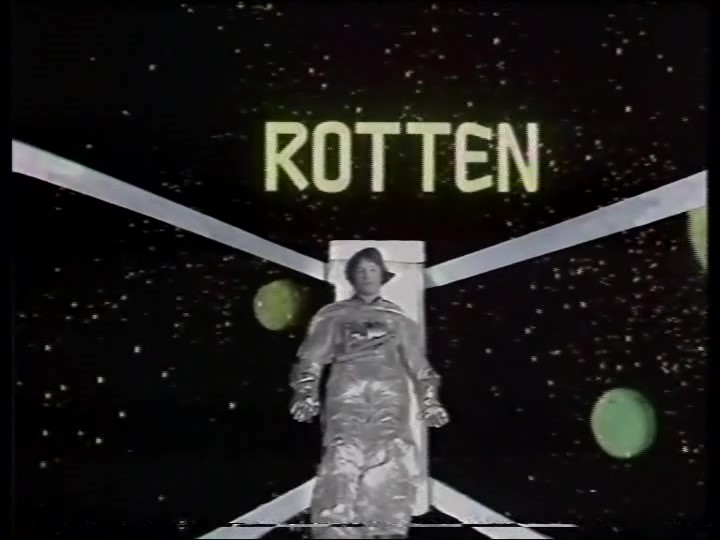The Forgotten Television Drama – Half-Hour Play season at BFI Southbank in May 2023 began with a half-hour discussion in which BFI TV Programmer Marcus Prince talked to season curator Lez Cooke about the rationale for the season.
MP: So we have called the season ‘Rediscovering the Half Hour Play’ – was this the motivation and genesis of the idea for you in researching the season – a feeling that these short plays have been sadly overlooked and neglected?
LC: This is the 4th season of Forgotten Television Drama at BFI Southbank, all of which came out of a project to rediscover neglected and overlooked television drama that we did at Royal Holloway from 2013-17. Although the project officially finished in 2017 we’ve kept the blog going and we’ve been writing a book exploring some of the major themes of the project. Among the chapters I proposed for the book was one on the half-hour play, which I’d come to realise had been an important form in TV drama history but which doesn’t really exist today in its original anthology form. I started writing a chapter which was supposed to be 6000 words and ended up writing 16,000 words because I kept discovering more and more half-hour plays, many of which no longer exist, but which have been important in enabling many writers and directors to get started in television drama, some of whom went on to produce landmark work.
MP: Most of these short plays come from Anthology series – Half-Hour Story, Thirty-Minute Theatre, Second City Firsts and Tales of Unease etc – Can the 30 minute play stand alone or does it need to be tied into an overarching theme like this? Why did the anthology series fall out of favour? Is it experiencing a resurgence with the new flexibility of the streamers?
LC: There have been half-hour plays made as one-offs but the vast majority were made as part of anthology series, sometimes themed like Tales of Unease or Tales of the Unexpected, sometimes simply a collection of short plays by new writers. It gradually fell out of favour in the 1990s when there was increased competition in television and ratings became more important. I’ve calculated that in the 1970s, which was really the highpoint of the Half-Hour Play, there were 34 anthology series and about 450 plays were broadcast. By the ‘90s this was reduced to 10 series and 100 plays. There’s the potential for a resurgence with the streamers but I don’t think there’s much evidence that it’s happening yet.
MP: The 30 minute complete story is a very definite discipline for both writers and directors – are there certain creative advantages to this form?
LC: Alun Owen alluded to it in the quote that’s in the brochure, about every writer having something to say that suits the half-hour form. He went on to say that what attracted him to the half-hour form was that it enabled him to write a short play without padding, a play that was stripped down to its bare essentials. A lot of single plays made in the 1970s might have benefitted from being shorter!
“Every writer has in his mind some experience, some anecdote, some piece of life, something that he wants to and can say in half-an-hour. In a 30 minute play he can say it without padding – and I loathe padding.”
Alun Owen (TV Times, 13 May 1967)
MP: The short form (and often low budgets) provided opportunity for new talent to get their first break such as the plays directed by Novice Directors we are about to see tonight – Are we missing those opportunities now or has YouTube simply fulfilled this function?
LC: I think there are fewer opportunities in broadcast television for new writers and directors to get started. They tend to have to start writing for one of the soaps and conform to existing structures and narratives and use already defined characters. There aren’t really the opportunities to get started with original plays which there were in the 1960s-70s. New writers and directors can produce low-budget work and post it on YouTube but that doesn’t necessarily enable them to progress to more developed work in the way that writers and directors did with the BBC and the ITV companies in the ‘60s and ‘70s.
MP: You chose to theme the plays across 6 distinct areas:
Early Works by Well Known Writers
Can you talk us through why you chose these themes and what each one tells us about the history and development of the 30 minute play?
LC: When I was researching and writing about the half-hour play I discovered there was a wide variety of anthology play series on the BBC and ITV. These six categories offered an opportunity to represent a range of the types of half-hour play that were being produced with work by new writers and directors, women writers, plays produced in the regions by both the BBC and ITV, some of which were only ever shown in one region and not networked. It’s worth noting that the three experimental plays were all produced by regional BBC production centres, two of which were never networked. There was perhaps a greater freedom to experiment in the regions with the half-hour play when it wasn’t having to appeal to a bigger audience, which isn’t to say that there weren’t also a lot of innovative plays that were also shown on the network, such as Philip Saville’s Rotten for example.
MP: Mystery & Suspense seems to form the main area for these short plays to explore – why do you think that is?
LC: Spooky tales work very well in the half-hour form – the first series of Dramarama was subtitled ‘spooky’ and many of the Dramarama plays were in that genre. 25-30 minutes seems to be an ideal time in which to develop a simple idea before delivering a twist at the end. We’ll see it in the plays from Tales of Unease and Tales of the Unexpected. There was even a short Granada anthology in the late ‘80s called Twist in the Tale. The prevalence and popularity of the genre highlights the success of the half-hour play. It’s still there today with Inside Number 9, which is the only series which is still flying the flag for the half-hour play, but it’s slightly different because it’s an authored series, by Steve Pemberton and Reece Shearsmith, rather than an anthology of plays by different writers.
MP: Some of the plays are low budget and completely studio bound but others are shot on location on 16mm film like mini Plays for Today – so it seems there were no particular rules applying to their production?
LC: Originally they were nearly all studio plays, broadcast live, like the early BBC Thirty-Minute Theatre plays, which is why so many of them are now lost. Gradually, as with Play for Today, budgets were increased and a certain number of plays were allowed to be made on 16mm film, such as Stephen Frears’ Match of the Day, which was the first play in the Second City Firsts series to be shot on film. Usually there was only one play in each season which was on film – the budgets for a half-hour play series were not usually big enough to allow many plays to be shot on film. Michael Winterbottom’s Rosie the Great, in the final season of Dramarama, was really an exception in being filmed on location in West Wales.
It must have had a much bigger budget than most other Dramarama plays. This may be the first time that it’s been shown on the big screen, as opposed to the small TV screen that most people would have seen it on in 1989. Studio plays don’t always stand up very well to being shown on a big screen, so it will be interesting to see what Ridley Scott’s Half-Hour Story – Robert, which was a studio play, looks like on the big screen.
MP: We have talked about writers and directors – but some of the casts are really surprising for throwing up well-known names in early roles (e.g. Elizabeth Shepherd, Brian Glover, Peter Capaldi, Robson Green as well as established stars like Rachel Kempson, Ron Moody, Daniel Massey, Susan George)
LC: Yes the half-hour play is interesting because it features many actors who were not known at the time – I think the 1986 appearance of Robson Green in Hands was his first television appearance, but because it was only broadcast in the north east it’s little known and doesn’t get included in his filmography.
Is That Your Body, Boy?, the Thirty-Minute Theatre play by Andrew Davies which is showing on Sunday, is also Michael Kitchen’s TV debut. But the half-hour play also attracted established actors, I suspect because being a short drama they could fit it in between larger projects.
MP: Quite a high proportion of these short plays are experimental or edgy – is this to do with the ability to take greater risks when the budgets are lower? Does it release a greater freedom and creativity?
LC: I think so, yes. Ken Trodd, who was script editor on Thirty-Minute Theatre in its early days, says that what attracted the BBC to doing half-hour plays was that they were cheap, they were done live, without editing or locations, in small studios with minimal rehearsals. But he said that could actually maximise ambitions because the production team knew the plays were doomed to weekly extinction, so the low budgets and minimal resources were actually a challenge to produce more ambitious work. The same could be said of ITV because some writers thought the ITV companies were just using the half-hour play to fulfil mandatory requirements for drama without losing too much airtime. But there was some good work produced by people like Alun Owen, Alan Clarke and others working for the commercial companies.
MP: In an age where the American Streamers have pushed the price of an hour of drama to over one million pounds – have we lost the ability to take creative risks and to correspondingly take risks on new and emerging talent?
LC: There’s inevitably a reluctance to take risks when that kind of money is involved and that’s what’s lost in television today. Steve Pemberton and Reece Shearsmith are able to push the envelope with Inside Number 9 in a way that it might be much harder to do with longer, more expensive dramas. Charlie Brooker did it for a while with Black Mirror, but that’s been an exception I think.
MP: But could the 30 minute drama within the context of a really compelling Anthology series cut through in today’s crowded TV market?
LC: I think it could, perhaps on BBC2 or C4, but it would need to include work by some established writers and directors to attract audiences, as well as commissioning work from new writers and directors. It could be a successful mix if handled in the right way. But I don’t think we’re going to get the range and sheer number of half-hour plays that were on television in the 1970s.





